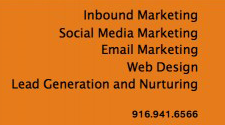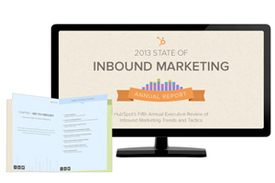You make money is by turning prospects into customers and customers into repeat and bigger customers.
Clearly, your sales team is the heart of this effort, or is it?
If your strategy for converting leads means handing them off to the sales team, then yes, that team needs to convert. But, if your marketing and sales teams work together to identify where prospects fall in their buying cycle, then you have a big leg up!

Assigning a salesperson to close a prospect while the prospect is in information gathering mode is likely to backfire. Think about all the times a retail salesperson has asked if you need help and you've responded, "I'm just looking." Were you just looking, or were you really just trying to avoid dealing with a salesperson because you weren't yet ready to buy? The same happens all the time in business!
What if the salesperson instead said, "All of our sales items are over there," and left it at that? You'd probably head over to the sales items, relieved that the salesperson isn't on your tail!
You need to think of your leads in the same way. Most are perfectly capable of finding you when they are ready to buy, but they might not know where to find the information they are looking for while they are moving through their buying process. It's your job to help them find it!
This is where the link between sales and marketing becomes crucial. The most important thing a salesperson can do to help nurture an early-stage prospect is to connect that prospect with informational, non-salesy, content. Help the prospect through the education phase, turning your company from a veder into a resource!
Marketing needs to keep sales stocked with white papers, case studies, research data, and other information that stretches the arsenal beyond features, benefits, and pricing. Marketing also needs to thave turn=key lead nurturing campaigns ready to go for each product or service you offer
Sales needs a way to plug prospects into automated, lead-nurturing email campaigns without having to involve the marketing team at every step.
One of the best ways we've found to do this is through the implementation of HubSpot marketing software. We use it to create multiple lead nurtuting campaigns, and pull leads through their buying process. We know what information our customers generally need as they make buying decisions.
HubSpot allows us to deliver information pro-actively, in a pre-determined order, on a pre-determined schedule, all the while keeping track of the actions our prospects are taking with the information. After we have helped buyers get through the information gethering stage, a sales rep is then flagged to reac out directly on the phone to see if there is more information the prospect needs.
This process keeps our sales and marketing synced, and most importantly, keeps us from trying to close sales before the buyer is ready to buy.










